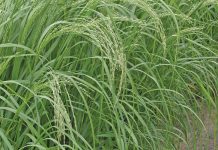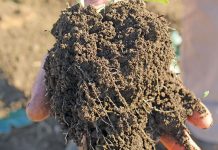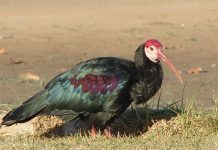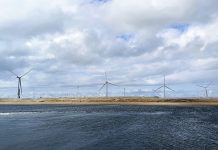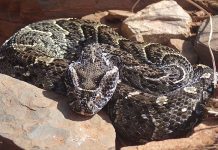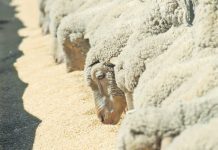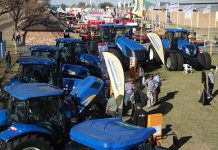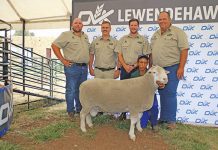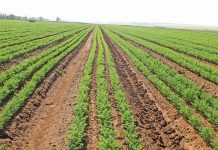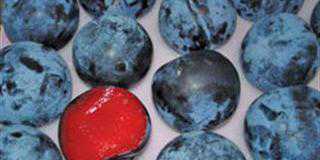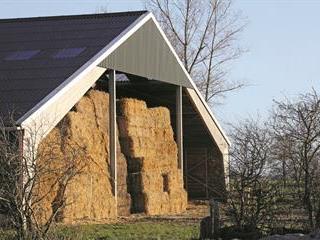
The most effective strategy to reduce the environmental impact of animal production is to increase productivity. Simply put, this means obtaining a higher yield from the same number of animals and land size – and done so sustainably. This is according to Dr Hink Perdok, sustainability projects director at Cargill Animal Nutrition (CAN) in Rotterdam, in the Netherlands.
In an address to journalists on a dairy tour of the country, he quoted figures from the United Nations Food and Agricultural Organisation (FAO), showing that animal production generates 14,5% of all human-induced greenhouse gases.Piggeries are responsible for 9%, poultry for 10% and ruminants for 81%. However, ruminants convert feed that is inedible for humans into food.
Apart from carbon dioxide (CO2), the main gases responsible for the greenhouse effect are methane (CH4) (cooking gas) and nitrous oxide (N2O). The carbon footprint of the production of 1kg of meat or milk can be expressed as the sum of these gases released during this production.
The warming effect of CH4 is 28 times higher than the same amount of that of carbon dioxide, while the effect of N2O is
265 times higher, Perdok said.
According to the FAO, there is a growing demand for animal products due to a growing world population and an increasing middle class. Between 2004 and 2050, the demand for meat will grow by 73% and the demand for milk by 58% or more. However, there is a general awareness that the environmental impact of animal production must be reduced.
Research to mitigate emission
The De Marke Knowledge Transfer Centre is an experimental farm belonging to Wageningen University and Research Centre, a world-renowned agricultural education facility in the Netherlands. De Marke focuses on methods to mitigate greenhouse gas emission and enhance nitrogen (N) utilisation in dairy cow diets.
These include:
- Using N fertiliser to enhance the digestibility of grass silage and reduce CH4 emission;
- Capturing the CH4 released by the entire process, from feeding stall to milk storage;
- Adding nitrate or sulphate to rations to modify digestion in the cow’s rumen to reduce CH4 emission;
- Using supplements to enhance the digestibility of grass silage to reduce N2O emission;
- Optimising manure digestion to further break down organic N in farm slurry to reduce N2O emission;
- Crushing silage grass to enhance its digestibility and reduce its CH4 and N2O emissions;
- Increasing the lifetime production of cattle by breeding more robust cows to reduce CH4 and N2O emissions;
- Improving slurry separation to reduce CH4 and N2O emissions.
Researchers are able to analyse a cow’s breath, including its CH4 content, by placing a small sensor connected to a vacuum at the mouth of a cow. This utilises sulphur hexafluoride (SF6) and is hence known as the SF6 technique. It is less accurate than climate chambers, but practical under field conditions. It
is used by the Indian National Dairy Development Company, one
of the world’s largest dairy companies. India is the world’s largest milk producer, and by limiting the greenhouse gas emission of its vast cattle and buffalo herds, the country could contribute substantially to reducing the greenhouse effect.
Intensifying production According to the FAO, more than six billion people worldwide, mostly in developing countries, consume milk and milk products.
Between 1999 and 2030, per capita annual consumption of dairy products will increase from 45kg to 66kg in developing countries, and from 212kg to 221kg in industrialised countries.One study showed that one billion kilograms of milk was produced in 2007 by only 21% of the number of cows that produced the same volume of milk in 1944.
Apart from reducing the number of cows producing the same volume of milk to only one-fifth in six decades, water use had been reduced to 35%. And 10% of the land utilised in 1944 was required. The study showed that intensifying milk production over this period resulted in a carbon footprint in 2007 of only 37% of that of 1944.
Assisting producers
CAN employs more than 500 researchers and technology professionals. All are involved in defining and understanding key aspects of animal metabolism, nutrient requirements and immunology. The company is a founding member of the Global Roundtable for Sustainable Beef and is an active member of the Roundtable on Sustainable Palm Oil. It is also a founding member of the Soy Moratorium in Brazil.
CAN’s two flagship innovation centres are in Elk River, Minnesota, USA, and Velddriel in the Netherlands. The centres are complemented by 13 Technology Application Centres (TACs) in 10 countries, enabling CAN to develop unique solutions for local milk producers more efficiently.
According to Perdok, CAN continually assists dairymen to exceed their milk production goals by supporting all aspects of their operations, concentrating on productivity. “Our teams bring expertise in nutrition, microbiology and molecular biology, biochemistry, enzymology, maths and statistics, immunology and more, to innovate on behalf of farmers,” he said.
Specialists help dairymen with strategies to increase profitability, often by making only a few management changes. “Proper calf-rearing is an important aspect of herd management,” Perdok explained. “It increases lifetime milk production, with fewer health problems and fewer vaccinations per cow. The higher a cow’s lifetime production, the lower her original rearing costs will be.”
By monitoring heifers from birth until first calving, a dairyman could control their growth. On Dutch dairy farms, the average calf mortality to three months is 10%. “This is still too high and there’s room for improvement,” he said. Perdok quoted recent milk production information to illustrate the continual increase in the average daily milk yield in the Netherlands and the increases in lifetime production of Dutch cows.
Measuring nutrition
CAN uses advanced near-infrared reflectance (NIR) technology to measure nutrient and quality parameters used in dairy ration ingredients, ensuring the best performance-based cow diets. More than two million NIR samples cover more than 200 ingredients, enabling livestock farmers access to the world’s largest NIR feed database.
The Cargill nutrition system was developed to provide precise nutrient calculations for feed formulation. This enables CAN to customise nutrition solutions to a farmer’s needs quickly. Perdok explained that, although feed conversion efficiency was increasing, producers must feed their cows more accurately for improved milk yield. The average milk yield in the Netherlands was currently 14 000l/ha/ annum, he said.
An FAO study showed that the level of greenhouse gas emission decreases as milk yield increases. Perdok said that management practices such as phase feeding and precision feeding individual cows, could increase the average daily yield per cows. No cow should be overfed or underfed.
Ethical production
According to Perdok, the ethics, environment and economics of animal production must be in balance to produce milk sustainably. “Scientists and farmers should approach environmental challenges in a comprehensive manner to achieve sustainability,” he stressed.
They should pay attention to issues such as land and water use, deforestation, biodiversity, climate change, livelihood, animal welfare, labour rights, acidification, food waste, packaging waste, toxicity and non-renewable energy use.
“Eutrophication, the process by which a body of water becomes enriched by dissolved nutrients such as phosphates that stimulate the growth of aquatic plant life and deplete dissolved oxygen, is also becoming a growing issue.”
Perdok emphasised that people were becoming increasingly interested in where their food came from and how it was produced. He quoted the UN’s Brundtland Report, which states that sustainability implies meeting the needs of the world’s current population without compromising the ability of future generations to meet their own needs.
Apart from an increasing demand for food and animal products, the world also needs cleaner water, fresher air and richer soils. Feeding the world efficiently, affordably and sustainably, means feeding the earth without ‘eating it up’. ”If we do what we always did, we will get what we always got,” he said.
Email Dr Hink Perdok at [email protected]

